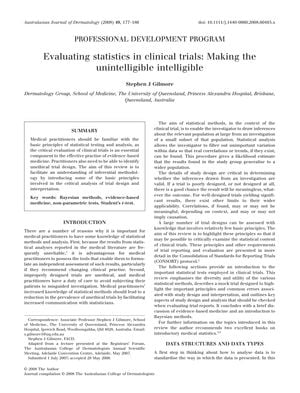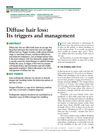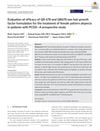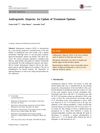Select the Most Correct Answers – Multiple Answers Possible for Questions 1–11
October 2008
in “
Australasian Journal of Dermatology
”

TLDR Medical practitioners need to understand basic statistics to properly evaluate clinical trials and avoid unethical designs.
The review emphasized the importance of medical practitioners understanding basic statistical principles to critically evaluate clinical trials and avoid unethical trial designs. It introduced key statistical methods, such as Bayesian methods, non-parametric tests, and Student's t-test, and discussed their application in clinical trials. The review highlighted the necessity of proper trial design to ensure valid inferences and the importance of distinguishing between different data types (parametric, non-parametric, and categorical) for appropriate statistical testing. It also covered various statistical tests and data structures, including regression analysis and cross-over designs, to aid in the critical examination of trial reports. The document outlined the considerations and methodologies for an investigator comparing a new oral treatment to spironolactone for female pattern hair loss. It emphasized the importance of avoiding cross-over designs due to potential carry-over effects and highlighted confounding factors such as age, severity, and duration of disease. The study design should ensure randomization to address these factors. The data type was assumed to be parametric, requiring a Student's t-test for analysis. A sample size of 42 subjects (21 per group) was calculated using specific parameters. The analysis would determine if there was a significant difference in anagen hair counts between treatments. The document also discussed the importance of power, confidence limits, and the risk of Type 1 errors in statistical analysis. Bayesian methods were suggested as a future approach for incorporating prior knowledge into statistical inference.





